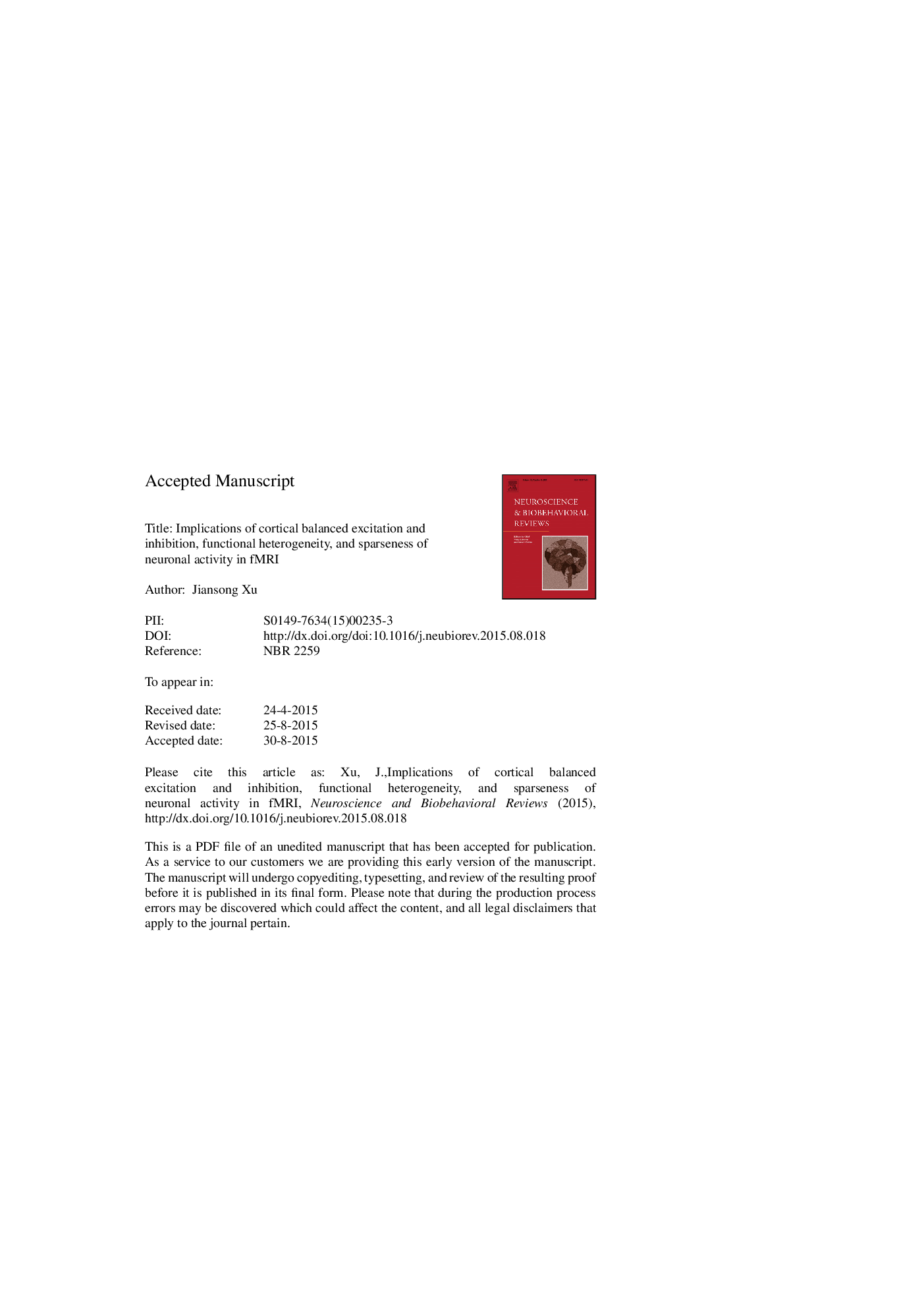| Article ID | Journal | Published Year | Pages | File Type |
|---|---|---|---|---|
| 7303277 | Neuroscience & Biobehavioral Reviews | 2015 | 33 Pages |
Abstract
Blood-oxygenation-level-dependent (BOLD) functional magnetic resonance imaging (fMRI) studies often report inconsistent findings, probably due to brain properties such as balanced excitation and inhibition and functional heterogeneity. These properties indicate that different neurons in the same voxels may show variable activities including concurrent activation and deactivation, that the relationships between BOLD signal and neural activity (i.e., neurovascular coupling) are complex, and that increased BOLD signal may reflect reduced deactivation, increased activation, or both. The traditional general-linear-model-based-analysis (GLM-BA) is a univariate approach, cannot separate different components of BOLD signal mixtures from the same voxels, and may contribute to inconsistent findings of fMRI. Spatial independent component analysis (sICA) is a multivariate approach, can separate the BOLD signal mixture from each voxel into different source signals and measure each separately, and thus may reconcile previous conflicting findings generated by GLM-BA. We propose that methods capable of separating mixed signals such as sICA should be regularly used for more accurately and completely extracting information embedded in fMRI datasets.
Keywords
Related Topics
Life Sciences
Neuroscience
Behavioral Neuroscience
Authors
Jiansong Xu,
